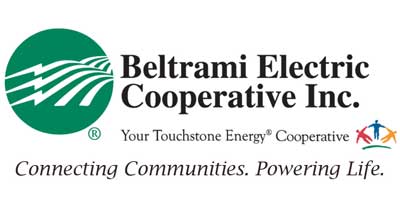When the temperature warms to signal the arrival of spring, many of us begin planning improvements to our outdoor spaces. This could include adding or maintaining a swimming pool, building a deck, adding a patio or assembling play equipment for your family to enjoy. However, it is important to plan for safety prior to adding an outdoor structure or improving your yard.
Power line awareness
Being aware of power line locations near your home is vitally important for your and your family’s safety. Even drop-down lines — the lines that bring power to a home — have voltages running through them and can be dangerous. Always look up and around for power lines, recognizing too that electricity can jump or transfer even without direct contact, before starting any outdoor project. Also know what’s below before starting any digging job.
Beltrami Electric Cooperative and Safe Electricity offer these tips to keep in mind while working in your yard:
- Assume that all power lines are always energized and keep at least 10 feet between a power line and you or any item you are holding.
- Perform a hazard assessment of the work area, noting all power line locations.
- Call 8-1-1 or your state’s underground utility locator service to mark underground utilities as part of planning and before any digging. The service is free.
- Utility locators do not mark private lines, however. Private underground lines—typically installed by the homeowner or a contractor—include, but are not limited to:
- Irrigation or septic system lines.
- Lines that service outbuildings (electric, gas, water, communication).
- Lines between the meter and your home.
- Lines to other outdoor items like grills or hot tubs.
Private lines need to be marked by an independent locating service.
Locally, you may contact Cooperative Development at 218-444-1143 and their locators will locate your private facilities for a fee.
- Once underground utilities are marked, the 8-1-1 “Call Before You Dig” service recommends that the area within 18 to 24 inches of either side of the marked lines be dug by hand with a fiberglass-handled shovel, not by machine.
- Do not install tree houses, playsets or swing sets, pools or decks and any associated structures within 25 feet of a power line. Consider the height and reach of play equipment (including the arc of a swing) and all deck and pool structures in relation to power lines.
- Educate your children about power line safety and how electricity can jump. Teach them to never touch a power line or get too close to one — either directly or with a toy or object — before sending them outside to play. This is especially important if they climb trees, fly kites or use remote-control (RC) devices, such as an RC airplane or drone.
- Use extreme caution when moving ladders and operating long-handled tools, such as pool skimmers, around trees and power lines.
- Also use extreme caution and look up and around for power lines when you are elevated, whether it be on a ladder, a boom lift, scaffolding or your roof.
- When planting and trimming trees, keep in mind that specialized tree trimming experts certified by the Occupational Safety and Health Administration (OSHA) in utility clearance are the only persons legally allowed to trim within 10 feet of power lines.
Please contact us with questions about specific power line clearance recommendations concerning decks, pools and play structures in your yard.
For more information about electrical safety, visit SafeElectricity.org.
